Platelet-Rich Plasma (PRP) for Tennis Elbow
Plasma injection for tennis elbow is increasingly becoming popular in the medical world. In particular, platelet-rich plasma or PRP injections play a critical role in treating sports injuries. This is where plasma injection for tennis elbow comes in. PRP tennis elbow treatment uses your blood cells to speed the healing process around your injured elbow.
PRP is derived from the patient. Your surgeon can obtain blood samples from you (the patient) and place them into a centrifuge. The centrifuge will spin the sample to separate components of your blood from platelets. These separated platelets will then be concentrated with the plasma to develop the much-needed PRP for the elbow or any other part of your body that might be injured.
What is Platelet-Rich-Plasma (PRP) Injection for Tennis Elbows?

PRP consists of two major elements: platelets and plasma. Platelets are part of the blood cells that play an active role in the healing process throughout your body. Also, platelets are famous for their clotting capabilities to make wounds heal faster.
The same platelets have growth factors that trigger cell reproduction and stimulate tissue regeneration. On the other hand, plasma is a liquid portion of your blood. So, platelet-rich plasma is the blood that has more platelets than normal.
Another question is, “What is a PRP injection for tennis elbow?” Once the PRP is created from the patient’s blood samples, that solution is injected into your injured elbow. This platelet-rich plasma helps treat the injured tendon and ligament within your elbow.
Your healthcare provider will use ultrasound to help guide the PRP injection for the tennis elbow. The main idea behind this PRP injection is to increase your elbow’s concentration levels of growth factors. The increased growth factors play a significant role in accelerating the healing process within the injured area.
studies reveal that the concentration levels of growth factors in PRP may speed up or stimulate the healing process. By doing so, this platelet-rich plasma shortens the healing time of your injured elbow.
Platelet-Rich-Plasma (PRP): Best Alternative Treatment for Tennis Elbows?

Platelet-rich plasma injections play an important role in the treatment of a wide range of conditions, such as injuries, cosmetic procedures, and musculoskeletal pain. For example, injection for tennis elbow is yet another form of treatment that goes hand in hand with PRP.
Here are Top Examples of what PRP for elbow can treat:
PRP Injection for Tennis Elbow Treats Ligament, Tendon, and Muscle Joint Injuries
Doctors and a great number of healthcare providers know that your body has the ability to heal on its own. This is attributed to the presence of platelets and plasma in your blood. For example, with a PRP injection for the tennis elbow, you can expect your injured elbow to heal quickly.
Bear in mind that the PRP injection for tennis elbow is a form of therapy commonly referred to as regenerative medicine. You can take advantage of this regenerative medicine to harness the abilities of your body to heal itself naturally.
Regenerative medicine in PRP will certainly amplify and hasten the natural growth factors that your body system needs to heal some tissues. Therefore, consider platelet-rich plasma tennis elbow to help repair damaged tissues, ligaments, and tendons within your elbow.
After all, plasma injection for tennis elbow can treat different musculoskeletal injuries and other similar conditions. Perfect examples include chronic injuries like the jumper’s knee and tennis elbow. These two conditions can take a little longer to heal properly.
The addition of PRP shots to your treatment regimen may help stimulate the healing process, speed up the PRP recovery time, and decrease pain around your elbow. A PRP injection for the tennis elbow can help you return to your normal activities sooner than you may have thought.
PRP Injection for Tennis Elbow is Ideal for Post-surgical Healing
Initially, the PRP injection was used by clinicians to accelerate the healing process after plastic or jaw surgeries. Today, post-surgical platelet-rich-plasma injections can help heal your elbows’ tendons, ligaments, and muscles.
How does Platelet-Rich Plasma Injection work for Tennis Elbow Pain?
As mentioned earlier, PRP treats quite a number of conditions. Key among them is treating injured ligaments, muscles, and tendons in your elbow joint using PRP injection PRP works by increasing levels of growth factors which aid in the healing process.
At Sforzo l Dillingham l Stewart Orthopedic +Sports Medicine, Dr. Christopher R. Sforzo, and Dr. Christopher L. Dillingham will help you with your tennis elbow problem. These doctors are board-certified orthopedic surgeons and fellowship-trained in different types of surgical operations. Their area of expertise covers injuries in the arms, hands, forearms, wrist, elbows, and shoulders. The doctors perform complex surgical procedures to ensure that your injuries heal.
PRP vs. Surgery: Which is preferred for Elbow Treatment?

Risks and Side Effects of PRP Treatment for Elbow
Some of the known risks and side effects of using PRP treatment for tennis elbow include:
- Some pain in the injured part of your elbow
- The likelihood of showing less improvement in the injured area Skin discoloration
Is PRP Treatment Safe for Tennis Elbows?
Yes, PRP injections are very safe for your tennis elbow treatment. However, a trained and experienced medical provider needs to perform the procedure to be effective and safe. Like any other medical procedure, PRP injections may have some mild risks that include headaches, pain, and redness.
Final Thought
If you suspect that you have a tennis elbow, you need to find the most appropriate form of therapy or treatment. In this case, PRP injection for tennis elbow is highly recommended for your elbow injuries. Treatment with platelet-rich plasma shows some promising results. PRP is an ideal form of treatment for damaged ligaments, muscles, and tendons in your joints, including the elbows.

